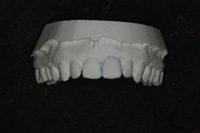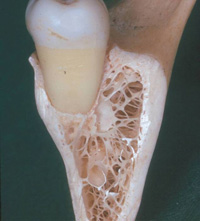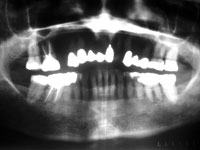Recent published articles have discussed the practicality of a dental office eliminating participation in dental insurance programs. This article will describe certain parameters necessary for a dental office to become successfully “insurance free,” using as an example an office that has successfully accomplished this goal.
A dental office should consider several factors before deciding whether or not it can eliminate participation in dental insurance programs. Once these factors have been evaluated, then a step-by-step plan can be implemented. In order to become an “insurance free” dental practice, participation in most (if not all) insurance plans, PPOs, and DPOs must end.
THE STEPS
The first step is to review your dental office schedule. If you are a busy office with a solid appointment schedule for several weeks, you may be a candidate for eliminating your insurance participation. However, if your schedule is spotty with considerable open chair time, or if you have an associate dentist who has considerable open chair time, then eliminating insurance participation may be a financial mistake.
Next, it is important to determine what percentage of your practice is insurance-based and for what percentage you are a participating dentist. If the majority of your practice has you as a participant in specific plans, you may have serious financial difficulty by terminating your insurance contracts. If your insurance participation is 50% or less, then eliminating participation is a real possibility. This article is using 50% as an arbitrary number. The lower the percentage that your practice has in insurance plan participation, the less negative effect your termination will have on your patient base and financial interests.
Our office was established in 1978 in a middle- to upper-middle-class suburb of Philadelphia. We presently have 3 full-time dentists. The 2 partners in our practice have their schedules booked out approximately 4 to 6 weeks. Our associate dentist is generally booked one to 2 weeks in advance. We never participated in any DPOs or PPOs, but did participate in Blue Cross/Blue Shield (BC/BS) as well as the Delta Dental programs. We were also participants in several smaller dental insurance plans. Patients with fee-for-service plans were billed after we were reimbursed by their insurance. We always billed for the remaining balances after insurance payment.
In the early 1980s, we had calculated that approximately 70% of our patients had some form of dental insurance. Today that number is approximately 59%. In 1981 we eliminated our participation in BC/BS of Pennsylvania because we felt that its fees were not keeping up with rising dental office expenses. We did lose some families, but the majority remained with us. These patients had to pay our full fee and not the adjusted fee mandated by BC/BS as a participating dentist. Many of the patients who left our practice returned to us after experiencing inferior service and/or quality of care elsewhere.
In 1991 we eliminated our participation in Pennsylvania Delta. Our termination here was because of the combining of the Delta programs into DeltaUSA. Our office is on the border of Pennsylvania and New Jersey. We actually had more New Jersey Delta patients. Under the new DeltaUSA program, they reimbursed us at the lower Pennsylvania schedule of payments, which meant a sharp decrease in what we were previously receiving for our New Jersey Delta patients. Similarly, our experience was the same as in our termination with BC/BS in 1981: we did lose some patients, but many eventually returned.
As part of our new policy, in both 1981 and 1991 we sent these patients a letter advising them that our need to terminate as a participating dental office in no way meant that we couldn’t still be their dental office of choice. We explained that we were resigning as a participant in their particular plan because their insurance carrier was not reimbursing our office at a level that allows for quality dental services. The financial impact on patients meant that if we charged $100 for a procedure and their plan’s scheduled allowance was $80, we could collect the additional $20. We have also eliminated our participation in smaller plans over the years.
TOTALLY INSURANCE FREE
In 1997 we decided to become totally “insurance free.” We decided to treat our insurance patients the same way we treated our noninsurance patients: they would be responsible for payment when service was rendered and then be directly reimbursed by their carrier. We advised them of this policy change with a letter. For those patients having extensive dental work, we had them sign a credit card authorization allowing our office to bill their credit cards after payment from their insurance carrier was received. We did offer them the opportunity to pay our office at the beginning of treatment and receive a 5% bookkeeping courtesy, as we did with patients who did not have dental insurance. In these cases, we did accept assignment of benefits for their preauthorized procedures. In this manner, these patients would not have to outlay large dollar amounts for extensive treatment. We knew of several plans that would only send payments to patients, since our office was nonparticipating (ie, BC/BS and Delta). These patients would be expected to pay for services at the time treatment was rendered.
It is highly recommended that not all insurance plan participation be terminated at the same time. First, choose an insurance plan, formulate a letter to your affected patients, and inform them of this new policy and its date of inception. Your staff should be well prepared to handle phone calls and inquiries regarding this change. The most frequent remarks our patients stated were that they had been coming to our office for years, surely they are trustworthy, and how they would prefer our old policy remain the same with regard to their insurance payments. Advise your staff to be receptive to your patients’ inquiries and have specific, scripted answers to their concerns. Your staff should emphasize that change is needed to maintain quality of service and quality of care.
As you eliminate an insurance plan participation, you should track the effect it has on your financial bottom line. If you are dropping out of PPOs or DPOs, be prepared for a larger percentage of patients to leave your office, as you are no longer a listed participant. Again, eliminate your participation over a period of time, evaluating its impact on your office. This evaluation can be done on a 3- to 6-month time frame. What you would hope to see is a dramatic increase in revenues. If you continue to be busy, you are now being reimbursed at a much higher level per hour and per procedure.
CONCLUSION
Many dental practices are controlled by insurance company reimbursements. Insur-ance companies do not take into account the high overhead of many dental offices. They do not care whether you allow 30 minutes for an adult prophylaxis or 60 minutes. They will pay you the same. Buying the newest in equipment, staying on top of current techniques, and maintaining a clean and up-to-date facility are not a priority to insurance companies. If you allow insurance companies to control your fees, you will be working for less dollars per hour and possibly compromise your care.
The bottom line for your office is to maintain quality dentistry for all your patients and still have your practice grow financially. Becoming “insurance free” means you must also maintain a quality- and service-oriented practice. You have to give your patients a reason to stay with you and not to go down the block to an office that will accept insurance company fees. If you try to be everything to everyone, you probably won’t succeed. Patients expect more if they pay more.
Becoming an “insurance free” office is a goal many dental offices can achieve. Analysis and proper planning are essential to be successful.
Dr. Hopenwasser is a practicing dentist for more than 30 years who has lectured extensively on dental management. His
practice management articles have been published in Dental Economics, Dental Management, Dentistry Today, and the Journal of the American Dental Association. He has also written a chapter in the book, Survival Guide for the Young Dentist. He can be reached at (215) 493-4021 or Smilexcellence@aol.com.











